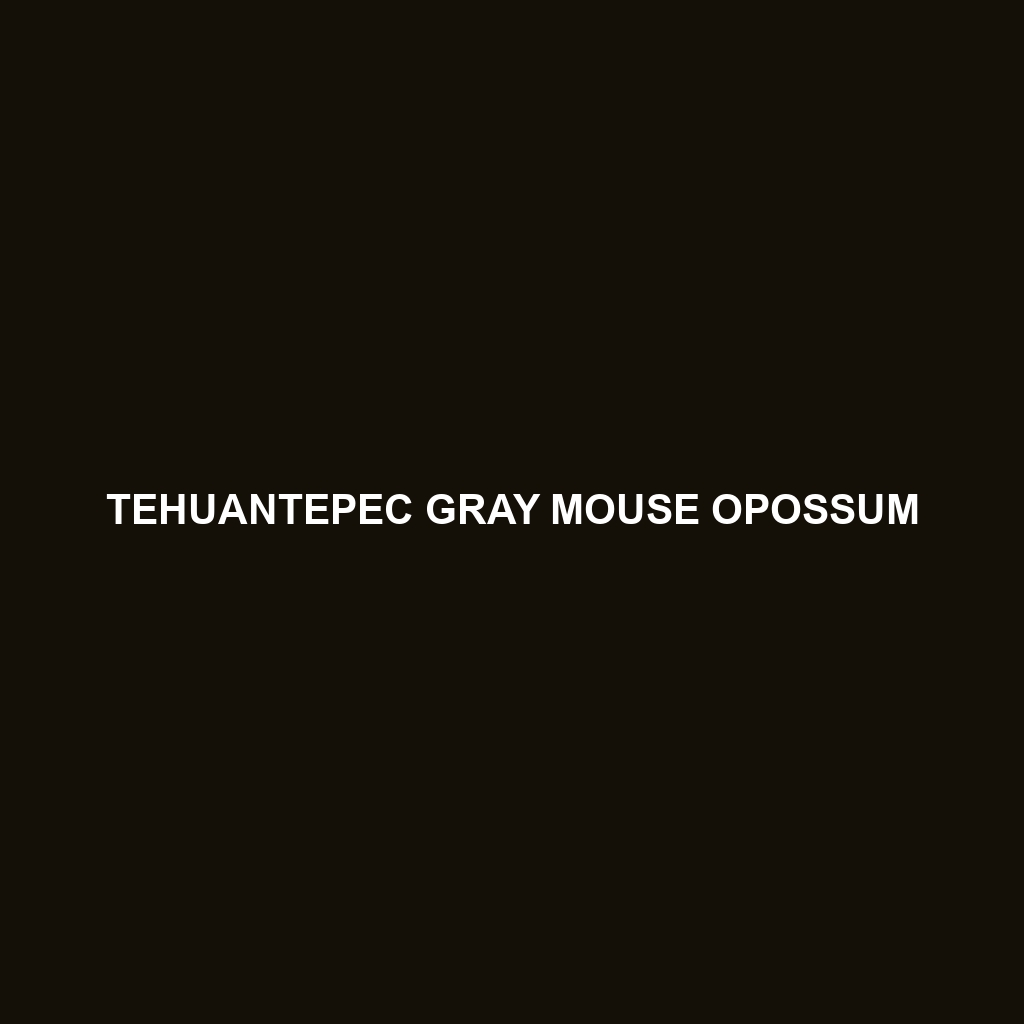Tehuantepec Gray Mouse Opossum: A Comprehensive Overview
The Tehuantepec Gray Mouse Opossum (Tlacuatzin canescens) is a small, nocturnal marsupial native to parts of Central America, primarily found in Mexico. Known for its agile movements and distinctive gray fur, this diminutive creature plays a vital role in its ecosystem through seed dispersal and insect control. Despite its name, it is neither closely related to common opossums nor typical mice, making it a unique addition to the biodiversity of its habitat.
Physical Characteristics
Size: The Tehuantepec Gray Mouse Opossum is relatively small, measuring about 10-15 cm (4-6 inches) in body length, with an additional tail length of 13-20 cm (5-8 inches). Adults typically weigh between 20-40 grams (0.7-1.4 ounces).
Coloration: This opossum is characterized by its soft, grayish fur that covers most of its body. The underbelly is usually lighter, ranging from white to a pale cream color.
Special Features: One of the defining features of the Tehuantepec Gray Mouse Opossum is its long, prehensile tail, which is sparsely furred and well-adapted for grasping branches and aiding in arboreal navigation. The eyes are large and prominent, indicative of its nocturnal lifestyle.
Behaviors
Social Interactions: The Tehuantepec Gray Mouse Opossum is generally solitary, with individuals coming together only for mating. They communicate through vocalizations, scent markings, and body language.
Feeding Habits: As omnivores, their diet consists of fruits, insects, small invertebrates, and occasionally small vertebrates. They play an essential role in seed dispersal due to their fruit consumption.
Ecological Roles: In addition to seed dispersal, these opossums help control insect populations, contributing to the ecological balance of their habitat.
Habitat
Geographical Range: Primarily found in the tropical and subtropical forests of southern Mexico, particularly in the region of Tehuantepec, as well as in other parts of Central America.
Preferred Environment: They thrive in dense, humid forests with plenty of vegetation that offers ample cover and abundant food sources. They are also known to inhabit secondary forests and areas of human encroachment if the conditions are suitable.
Adaptations
Nocturnality: Their large eyes and excellent night vision are adaptations for their nocturnal lifestyle, allowing them to navigate and forage effectively in the dark.
Prehensile Tail: The tail’s ability to grasp and hold on to branches aids in their arboreal movement, making them adept climbers.
Dietary Flexibility: Their omnivorous diet allows them to adapt to various food sources, enhancing their survival in diverse environments.
Conservation Status
The conservation status of the Tehuantepec Gray Mouse Opossum has not been extensively studied, but it is not currently listed as endangered. However, habitat destruction and deforestation pose potential threats to their populations. Conservation efforts focused on preserving tropical and subtropical forests are crucial for their continued survival.
Fascinating Fun Facts
Marsupial Mystery: Unlike many other marsupials, female Tehuantepec Gray Mouse Opossums do not have a pouch. Instead, their young cling to the mother’s teats and later ride on her back.
Ambidextrous Climbers: Their prehensile tails and dexterous feet make them highly agile, capable of navigating complex arboreal terrains with ease.
Camouflage Experts: Their gray fur blends seamlessly with the bark and foliage of their forest habitats, providing effective camouflage against predators.
By understanding the Tehuantepec Gray Mouse Opossum’s unique attributes, behaviors, and ecological importance, we can better appreciate the diversity of life within tropical and subtropical forest ecosystems and the need to protect these fascinating creatures.
